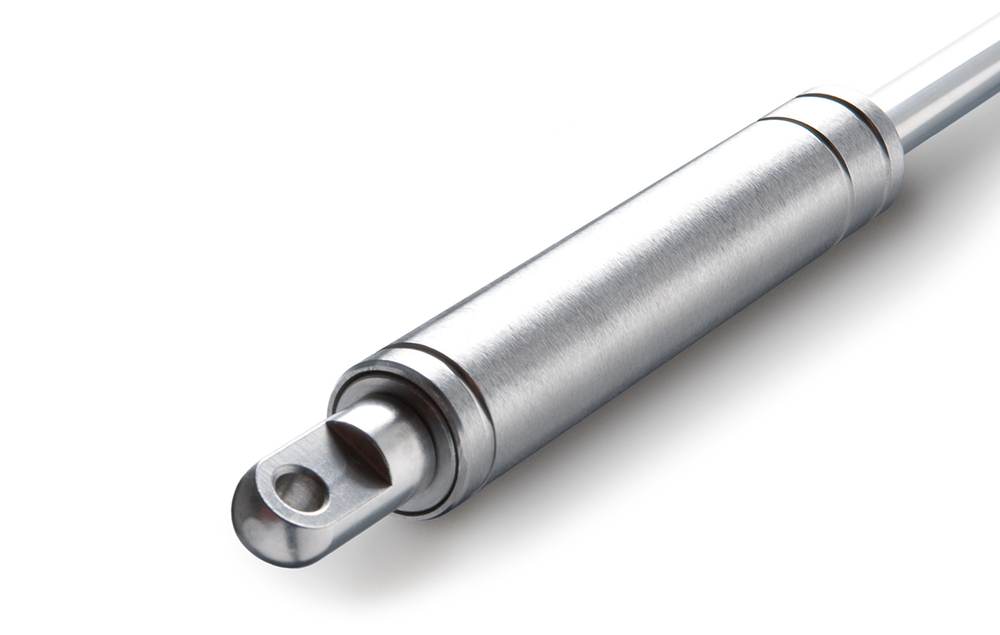The difference between 304 and 316 and more information just for you
Do you want to buy a stainless steel gas spring? Then you have come to the right place at Gasspringsshop.com. Gasspringsshop is also the number #1 webshop in gas springs. We have different lengths, diameters and materials in stock. The different materials in our range are steel and stainless steel 304 V2A. We’ll explain you the difference between stainless steel 304 and stainless steel 316. We are also happy to explain why you should choose our gas springs.
Do you want to get started right away? Then simply configure your gas spring yourself if you already know roughly what you need, calculate your gas spring if you have no idea what you need for your application or look for a replacement for your current gas spring.

Steel or stainless steel gas spring: which is better?
Is a steel or stainless steel gas spring better? Basically there is no “wrong” or “right” in this case. Both materials have certain properties that show up better in different circumstances. For example, a steel gas spring is less practical if the application could possibly come into contact with water or moisture in any way. The gas spring will eventually rust, show traces of corrosion and break. Something you would of course want to avoid.
A good alternative is a stainless steel gas spring. This material is corrosion resistant and also meets certain hygienic requirements – something that is often very important in the chemical and food industry. At Gasspringsshop we offer two types of stainless steel: stainless steel 304 and stainless steel 316. We are of course also happy to explain the difference between them.
Difference between stainless steel 304 and stainless steel 316
The big difference between stainless steel 304 and stainless steel 316 is in the composition of the materials. Stainless steel 316 contains 2% molybdenum, which makes the material more resistant to crevice, pitting and stress corrosion cracking. The molybdenum in stainless steel 316 makes it less sensitive to chlorides. This property in combination with a higher percentage of nickel increases the corrosion resistance of stainless steel 316. The weak point of stainless steel 304 is its sensitivity to chlorides and acids, which can cause corrosion (local or otherwise). Despite this drawback, a gas spring made of stainless steel 304 is an excellent solution for home-garden-and-kitchen applications.
Stainless steel gas spring: the solution for aggressive environments
A gas spring made of stainless steel is the solution for aggressive environments where chlorides and acids are used. Due to a different composition, this material is more resistant to corrosion and environmental influences, such as at the coast or in salt water. In addition, gas springs made of stainless steel 316 are of higher quality. These gas springs have a grease chamber and a built-in clean cap. A grease chamber ensures that the seal of the gas springs is always well lubricated, so that it does not matter how the gas springs are positioned. These gas springs can therefore also be mounted with the piston rod upwards or be positioned completely horizontally, without the seal drying out and the gas springs starting to leak. A clean cap ensures that the piston rod is scraped clean, so that no dirt gets into the interior of the gas springs. As a result, the stainless steel 316 gas springs can also be used in dirty environments. It’s very multifunctional!

Choose the right alloy
Think carefully about the choice of a certain alloy. This largely determines the success of the application. A mismatched alloy can sooner or later cause rust or reduce its lifespan. Of course you can always go for the highest possible quality, such as a gas spring made of stainless steel 316, but then you are also a lot more expensive in costs and you may pay for features that you do not need. When choosing, consider the environment, the surface finish and the budget.
Use the configurator or calculation tool to find your stainless steel gas spring
Do you already know approximately which gas spring you think you will need? Then put together your steel or stainless steel gas spring with our configurator. Still not sure which gas spring to use for your application? Then go to our calculation tool. With these tools you can easily compose your own gas spring and download a quotation without obligation. Do you have a question? Check our FAQ first. Often there is already a suitable answer in between! Are you stuck? Please feel free to contact one of our specialists.

